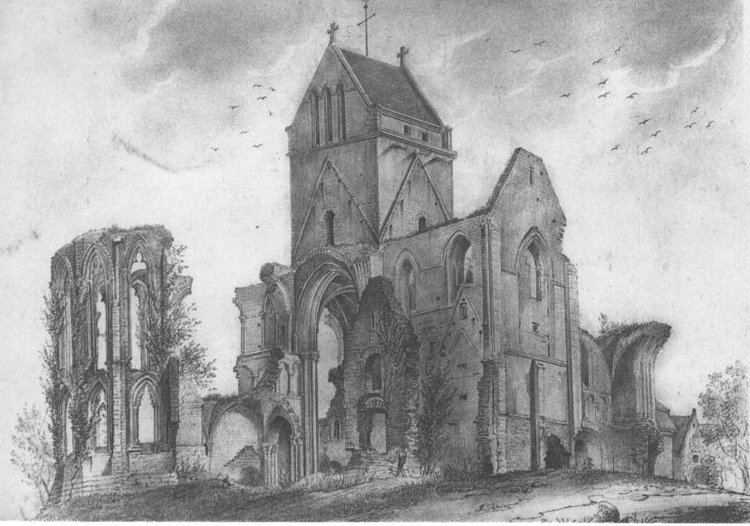 | ||
The Abbey of Saint-Sauveur-le-Vicomte, located in Saint-Sauveur-le-Vicomte district of the Manche department was founded in the 11th century by Neel Néhou, Viscount of Saint-Sauveur. The abbey has long had connections with the nearby Channel Islands and after being dissolved in the French Revolution has been reestablished in the 21st century.
Contents
Establishment
The abbey was built in 1067 by the monks of the abbey of Jumièges. Viscount Néhou wishing to replace the secular clergy college who officiated in the chapel of his castle. Around 1180 the first windmill was installéd there. The abbey was consecrated "in the early years of the second half of the twelfth century" by Bishop Algare. However, it was not completed until 1198, at the wedding of the daughter of Raoul Tesson, Mathilde Tesson, with Richard Harcourt. The abbey construction lasted more than thirty years and was the work of three families:
Hundred Years War
During the Hundred Years War, Geoffroy d'Harcourt who had to yield his castle to the English, commander John Chandos, razed the choir of the abbey, forcing monks into exile. The monks took refuge in Cherbourg and in their possessions Jersey. In 1375, Jean de Vienne installed cannons to the. The latter had to wait until 1422 revenir.
Restoration work was undertaken after the battle of Formigny and the expulsion of the English, under direction of Father Jean Caillot. The choir, leveled, had to be rebuilt in the fifteenth century. But part of the convent buildings disappeared, at this time .
Jacques Le Febvre du Quesnoy, Bishop of Coutances and abbot of Saint-Sauveur, dies at the abbey and was buried in the chancel of the abbatiale
French Reveolution
During the French Reveolution, A decree prohibiting monastic vows was passed on February 13, 1790. The abbey was sold as national property on 4 June 1791. The bailiff Hector Louis Amédée Ango, grandfather of Barbey d'Aurevilly, thought to save the abbey by transferring the building to parish service, but it met with opposition by priest Nigault of Lecange. The church sold 8525 pounds on May 23, 1793 bought by Desmares Marie Thion and Deshayes. The abbey was demolished and used as a stone quarry.
Ruins of the Abbey of Saint Sauveur
Gerville notes that in 1825 "the demolition of buildings is advanced." In 1831, demolition continues as mentioned by the English antiquarian Gally Knight. It is in 1832 that Mother Marie-Madeleine Postel was able to buy the abbey ruins that she wanted to make the parent of the congregation that she had founded in Cherbourg. It then remained only two small low houses to the left of the church and the entrance porch and the lower part of the building that was long storeroom and surrender.
Today the abbey church is a listed building on the first list of Prosper Mérimée in 1840 and two years later, in 1842, the reconstructed bell tower collapsed after a violent storm, the transept and the first bays choir. Undeterred, Mother Marie-Madeleine Postel, despite his advanced age, undertook to rebuild the entire building by entrusting the work to François Halley, local architect and sculptor.
Abbots
Abbey in commendam.
Congregation of the Sisters of the Christian Schools of Mercy
Modern refounding
